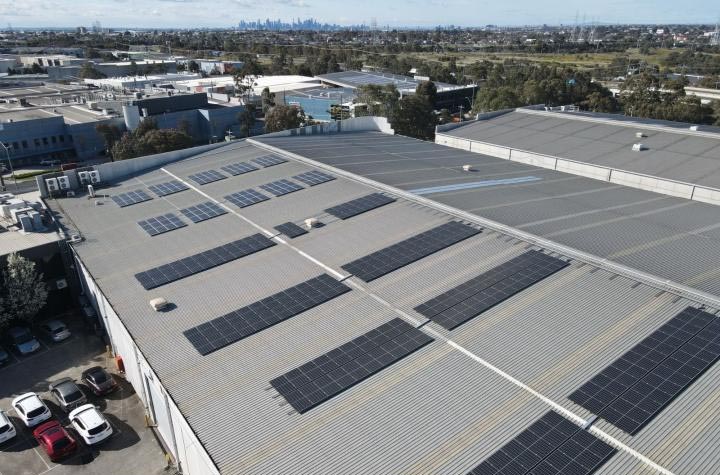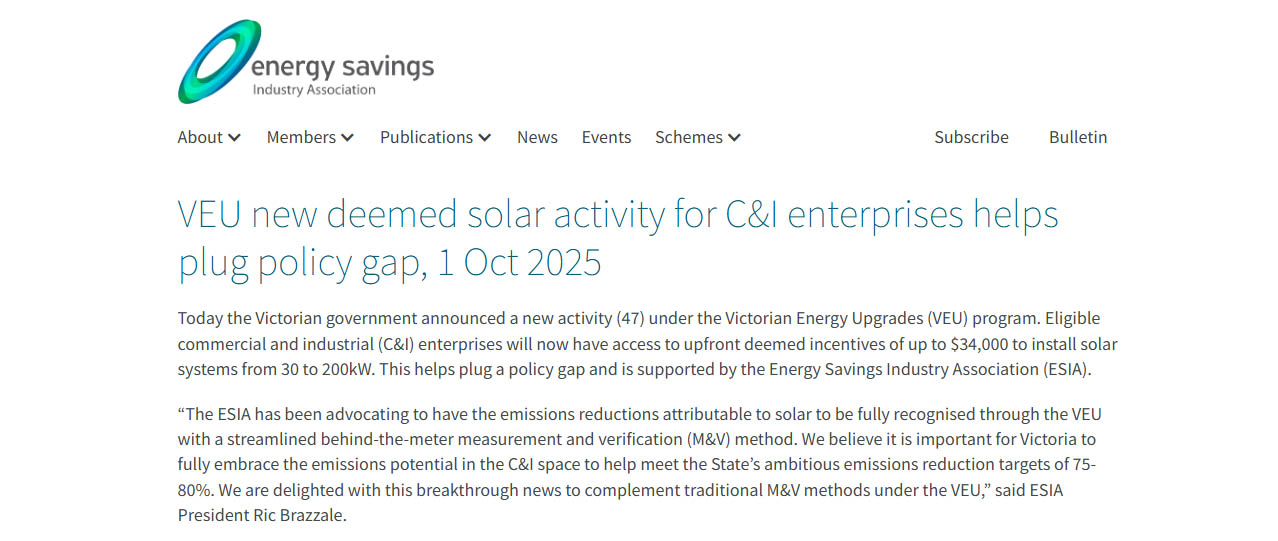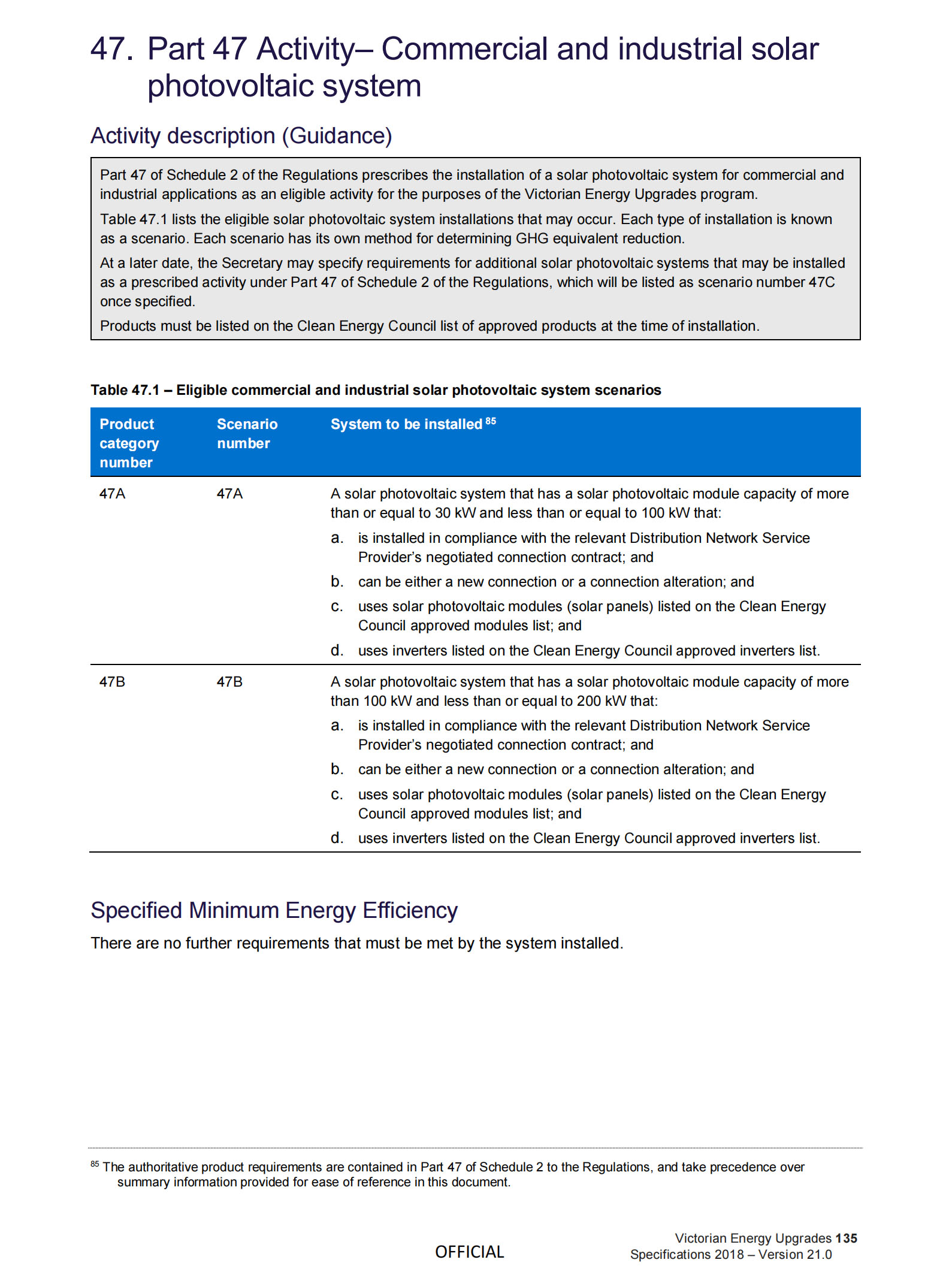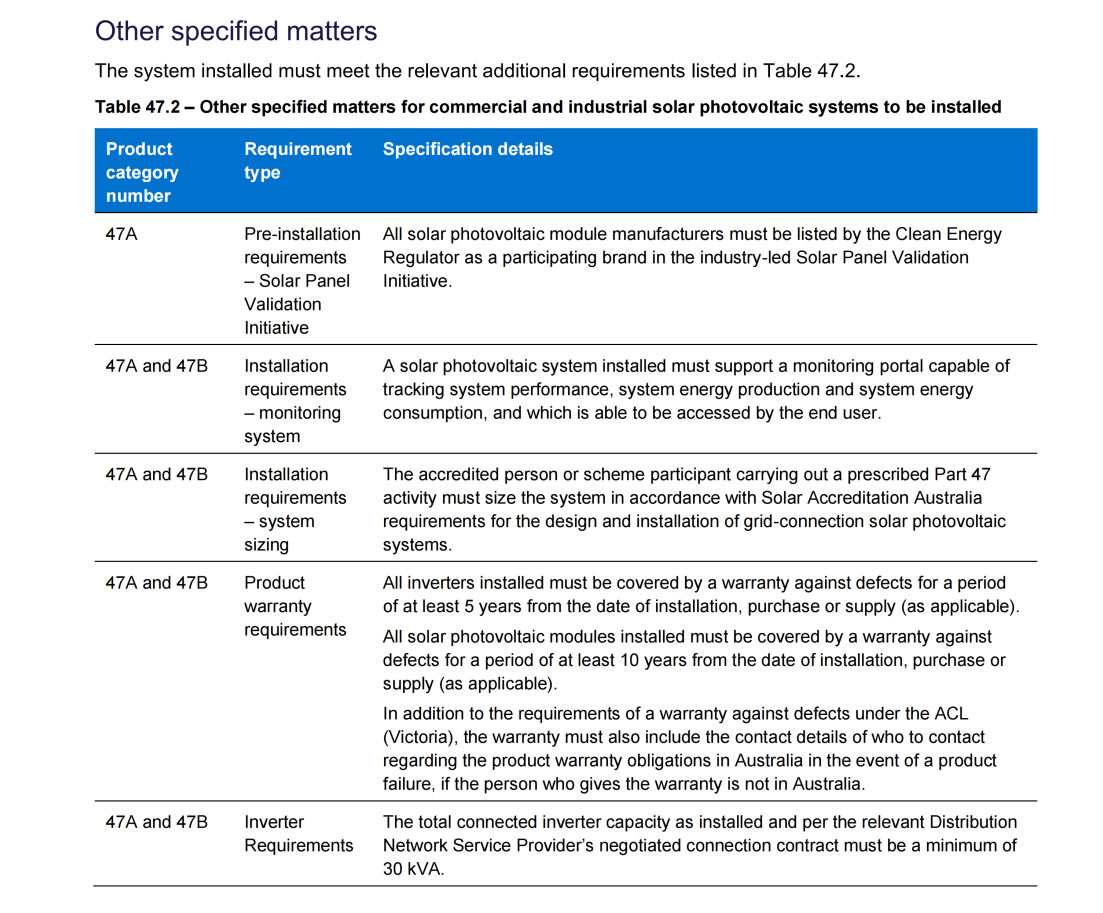
A groundbreaking initiative under the Victorian Energy Upgrades (VEU) program is set to accelerate the adoption of commercial and industrial (C&I) rooftop solar across Victoria, Australia. The state government has introduced Activity 47, a new measure specifically designed to include Commercial and industrial (C&I) solar photovoltaic (PV) systems in its incentive scheme for the first time.
For years, the VEU government program primarily focused on energy efficiency upgrades and smaller energy projects, leaving the systematic recognition of C&I solar's emission reduction potential untapped. Activity 47 effectively bridges this critical policy gap, providing a structured pathway for businesses to invest in solar energy.

Two commercial rooftop solar installation Pathways
The policy outlines two distinct scenarios for system installation:
>> Scenario 47A: 3-100kW Systems: This pathway targets small to medium-sized commercial solar installations. Projects must comply with a negotiated connection agreement from the relevant Distribution Network Service Provider (DNSP), which applies to both new connections and modifications. All PV modules and inverters must be approved by the Clean Energy Council (CEC).
>> Scenario 47B: 100-200kW Systems: This scenario is suitable for larger-scale solar systems, ideal for big factories and warehouse rooftops. Similar to 47A, a DNSP connection agreement is mandatory. CEC-approved components are required, with stricter equipment and installation standards due to the larger project scale.

Key Policy Requirements for Sustainable Investment
The policy enforces several key requirements to ensure system quality and long-term performance:
- ⭐ Eligibility: Commercial and industrial enterprises.
- ⭐ System Size: Rooftop PV systems ranging from 30kW to 200kW.
- ⭐ Component Standards: PV modules must come from verified brands to prevent the use of low-quality panels.
- ⭐Monitoring: Systems must have an online monitoring platform that allows businesses to track generation and compare it with their real-time electricity consumption.
- ⭐ Design & Compliance: Installers must adhere to Australian standards for PV design and grid connection.
- ⭐ Warranties: Minimum 10-year warranty for panels and 5 years for inverters. Overseas manufacturers must have a local warranty contact.
- ⭐ Grid Connection: Total inverter capacity must exceed 30kVA, complying with grid connection protocols.

These requirements, while detailed, are crucial for safeguarding the long-term returns on investment for businesses, moving beyond a simple subsidy to foster a standardized and sustainable solar investment environment.
Financial Incentive and Market Impact
A significant advantage is the upfront deemed incentive, which can reach up to $34,000. This prepaid reward, calculated on projected future energy savings, directly reduces the initial investment pressure, enhancing the economic appeal of C&I solar.
This policy arrives at a critical window of opportunity. As federal Renewable Energy Target (RET) incentives phase down, Victoria's Activity 47 acts as a vital market stimulus. It provides certainty and a clear target, leveraging the vast, untapped potential of commercial rooftops across the state. Activating this resource can help businesses cut power costs and rapidly inject more clean energy into the grid.
Ric Brazzale, Chair of the Energy Savings Industry Association (ESIA), highlighted that the industry has long advocated for VEU recognition of solar's contribution to emission reduction using simplified Metering & Verification (M&V) methods on the user side. This policy marks a substantial step forward. In pursuing its 75-80% emissions reduction target, Victoria can now harness the potential of distributed C&I resources alongside large-scale projects.
Activity 47 was officially gazetted on September 23, with technical specifications released on September 30. Due to the complexity involving grid connections and contracts, the full roll-out, including certificate creation, will follow as further implementation details are finalized.
Stay informed about the latest updates in the solar and energy storage industry!
For more news and insights, visit us at: https://www.youth-power.net/news/
Post time: Oct-15-2025

